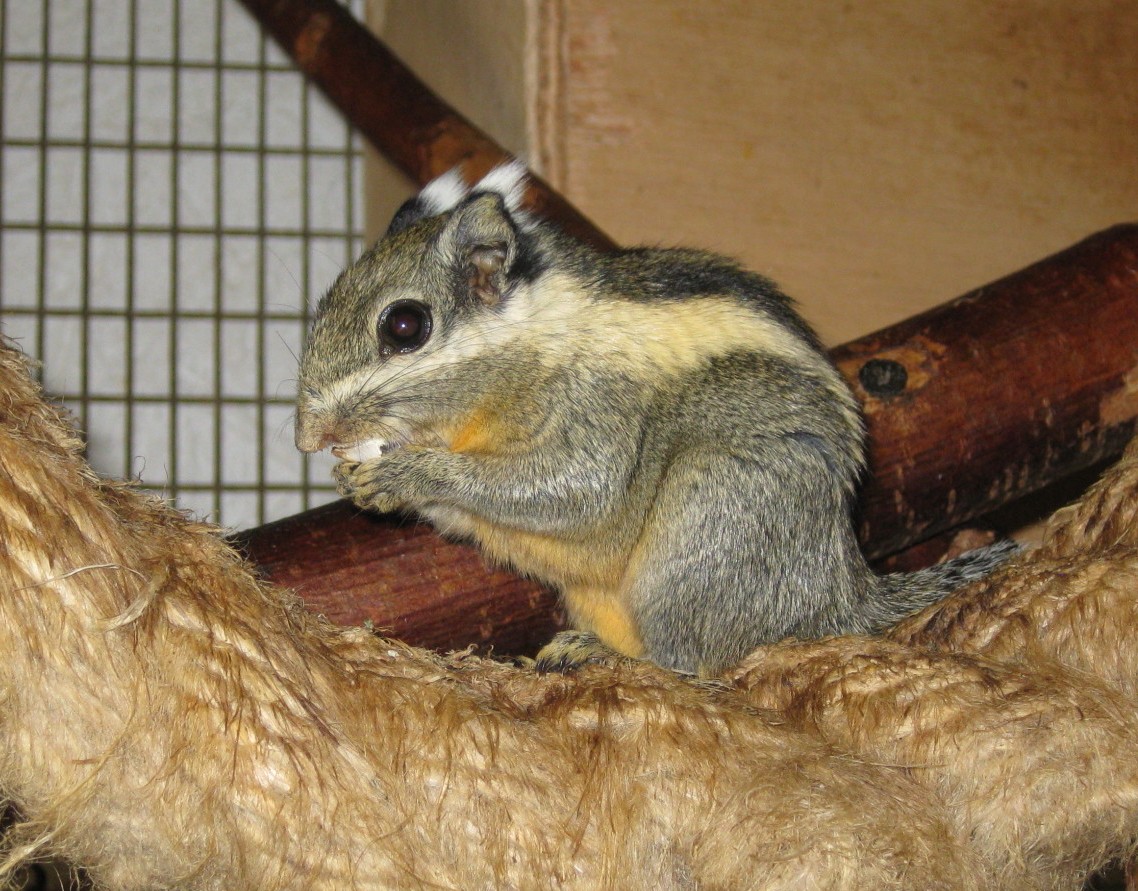
Himalayan striped squirrel, or Burmese squirrel(Tamiops macclellandi)
Phylum —chordata
Class — mammalia
Order — rodentia
Family — sciuridae
Genus – tamiops
Appearance
The striped pattern serves as an effective camouflage on fissured tree trunks.
The thickness and length of the alternating cream and dark brown dorsal stripes is the key identifying feature, and is diagnostic in distinguishing it from other, larger striped squirrels. In this species the stripes are thick and bold and run from near the eye to the base of the tail, which is narrow and short-haired.
Head-body length – 11 cm, tail length – 11 cm.
Habitat
The species ranges from the Himalayas through northern Burma and southern China to Thailand and Peninsular Malaysia.
Behavior
The animal leads a diurnal, mainly arboreal lifestyle. It is very mobile. This talkative animal is able to make a variety of sounds.
Diet
It eats nuts, fruits, seeds, insects and bird eggs.
Reproduction
These squirrels give birth to the cubs 2-3 times a year, and there are usually 2-3 cubs in one brood.
Incaptivity
Life expectancy in captivity is 6-8 years.
They are very active animals. The cage must be high and rectangular in shape. The two walls of the cage (back and side) should be covered with wood or coconut mats. The minimum size is 100x80x50cm (for a couple of animals).
Additional equipment: drinkers, feeders, houses, snags, branches, ropes, closed wheel for running, toys-suspensions for birds/rodents. All elements for games and recreation must be placed at the top of the cage. Litter fillers: wood pellets or sawdust.
You need to keep a pair of animals or the whole group.
The main diet consists of a complete feed for squirrels and fruits (cherry, peach, plum, mango, etc.), Hercules, as well as cottage cheese/yogurt/eggs, insects (live, dried, canned), limited: dried fruits, nuts, seeds. At the same time, the animal should always have access to fresh drinking water. You should also place mineral and salt stones in the cell, which help to fill the lack of salts and minerals in the body. Sometimes you can treat your pet with special treats.
Feed and change the water in the drinker daily.
Once a week, clean the cage: change the bedding and wash the cage.Once a month complete disinfection of the animals' homes is carried out.
 Russian
Russian
 English
English


















